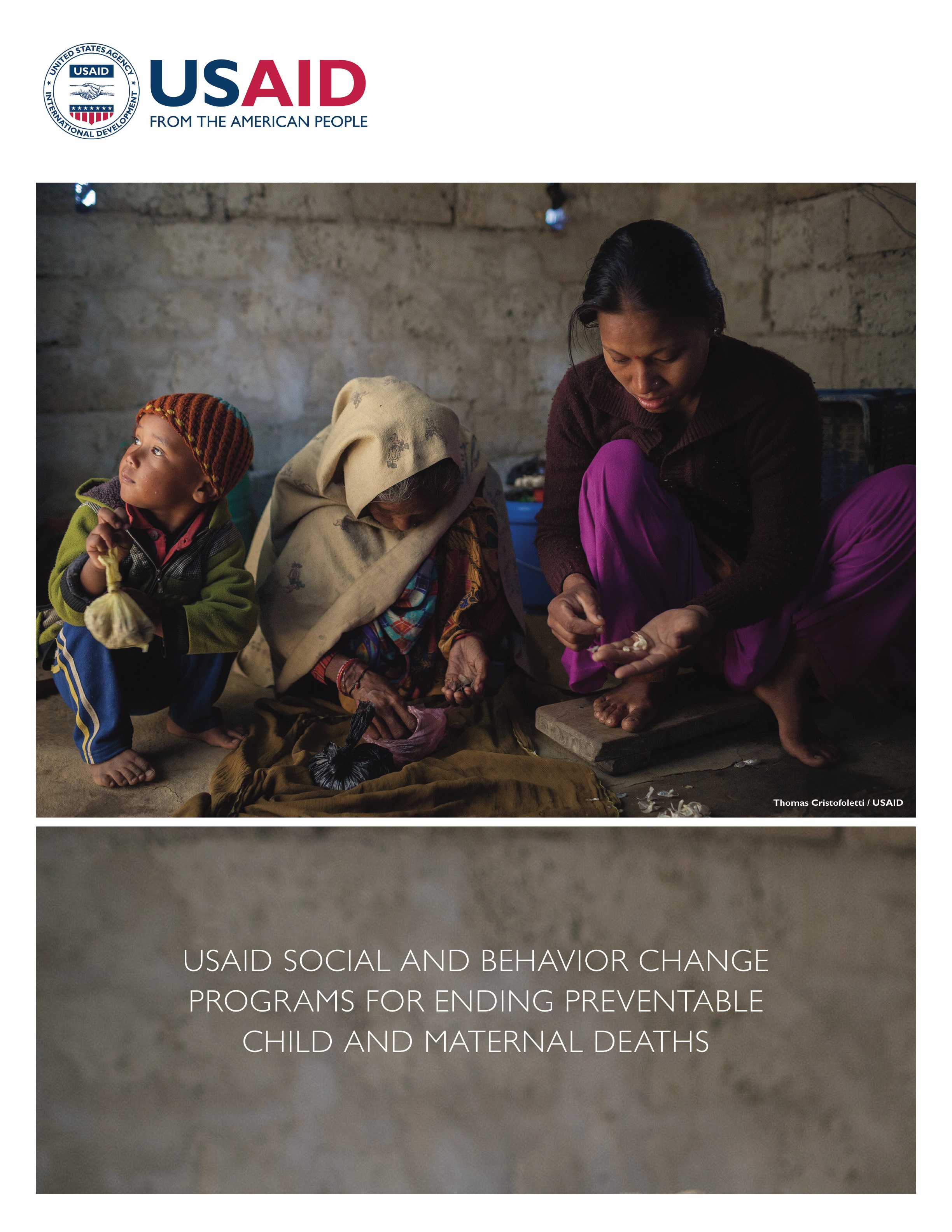- What We Do
- Agriculture and Food Security
- Democracy, Human Rights and Governance
- Economic Growth and Trade
- Education
- Ending Extreme Poverty
- Environment and Global Climate Change
- Gender Equality and Women's Empowerment
- Global Health
- Water and Sanitation
- Working in Crises and Conflict
- U.S. Global Development Lab
![]() (6 MB) USAID Social and Behavior Change Programs for Ending Preventable and Child and Maternal Deaths
(6 MB) USAID Social and Behavior Change Programs for Ending Preventable and Child and Maternal Deaths
In 2012, U.S. Agency for International Development’s (USAID’s) Global Health Bureau began a process of rethinking its support to social and behavior change programs in global health. The need to rethink was born out of frustration with the slow progress in achieving measurable changes in behaviors and social norms coupled with weak evidence of actual program effectiveness. Historically, interventions had succeeded in increasing knowledge within target populations but were less successful in changing behavior. Moreover, while there were some notable achievements, in many cases, programs were not delivering optimal results and suffered from a lack of evidence tied to standard and measurable outcome indicators of changes in behavior.
Measuring changes in behavior requires time and more complex and often costly monitoring and evaluation tools. Without data on actual changes in behavior, however, it is difficult to understand why the practice of life-changing behaviors such as exclusive breastfeeding, handwashing with soap, healthy timing and spacing of pregnancy, or oral rehydration therapy stagnates.
USAID’s Global Health programs have always placed importance on measurement and following international best practices. For social and behavior change programs, however, these international best practices and standards of evidence did not exist.
Faced with the lack of data, evidence, and standards, USAID, working with multiple partners across the U.S. Government, other donors, non-governmental organizations, and multilateral organizations, embarked on a concerted program to increase measurement and effectiveness of social and behavior change programs in order to track changes in behavior and improve future programming. This guide details seven goals for USAID’s Social and Behavior Change Programs for Ending Preventable Child and Maternal Deaths.








Comment
Make a general inquiry or suggest an improvement.